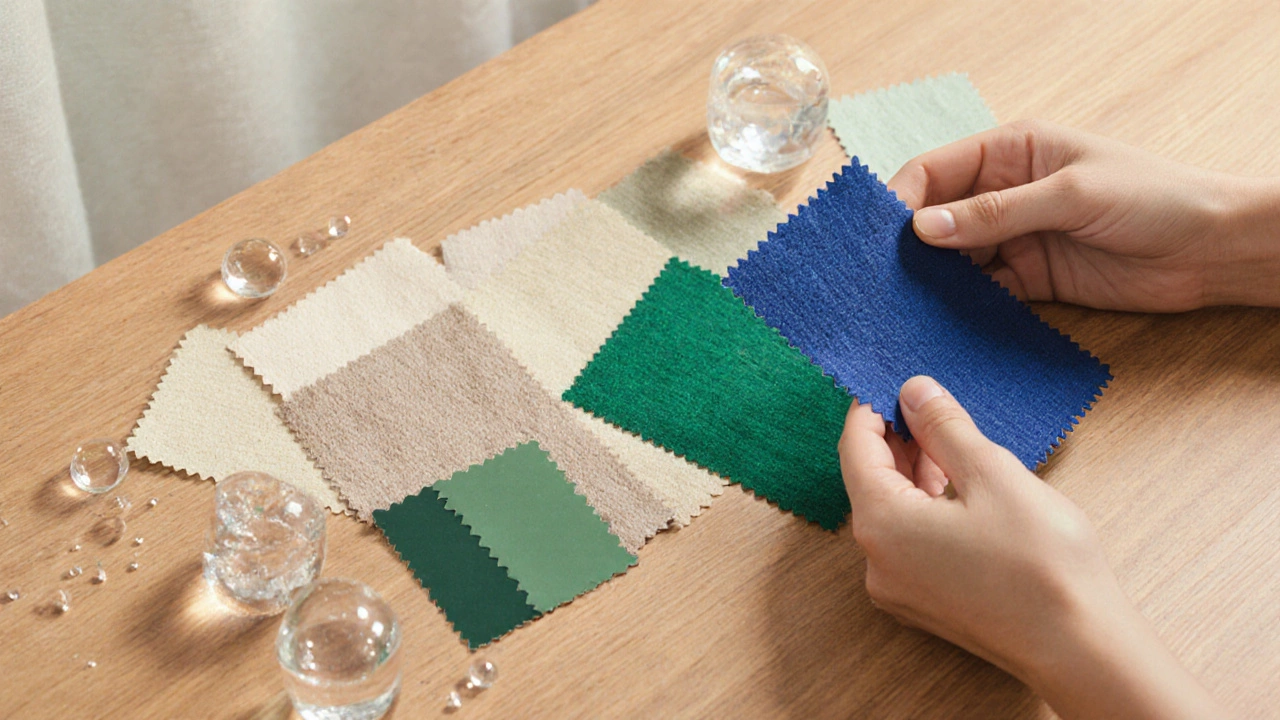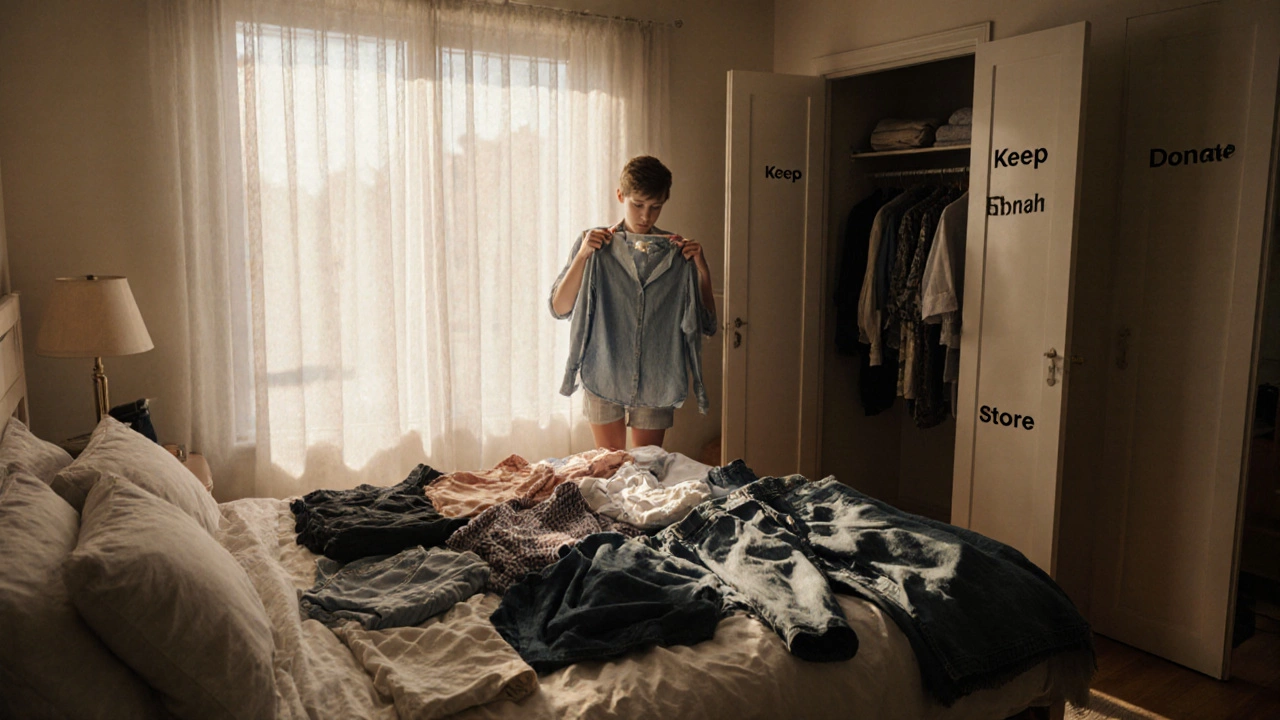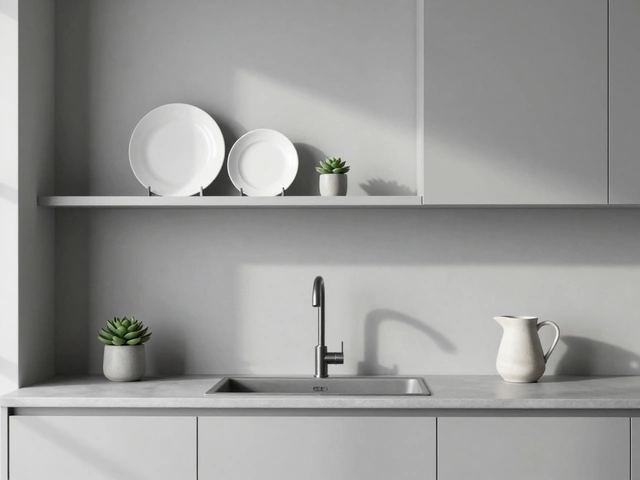Style Finder Quiz
Discover Your Personal Style in 3 Words
Answer a few questions to identify the three words that best describe your personal style. This tool will help you create a style statement that makes outfit decisions easier and more authentic.
Quick Takeaways
- Define personal style with three descriptive words.
- Use a quick wardrobe audit, color palette, and silhouette check.
- Borrow inspiration from a single style icon.
- Turn your three words into daily outfit decisions.
- Avoid common traps like over‑trending or vague adjectives.
Ever stare at your closet and feel like you have nothing to wear, even though it’s overflowing? The secret isn’t about buying more pieces - it’s about knowing the three words that truly capture who you are in fashion. This guide walks you through a fast, repeatable process so you can pin down your style in just three concise descriptors.
What Is Personal Style?
Personal style is a unique visual expression of who you are, shaped by your preferences, lifestyle, and the way you feel most confident in clothing. It’s not a trend you follow for a season; it’s the middle ground between what you love and what works for you. Think of it as your fashion fingerprint - instantly recognizable, endlessly adaptable.
Why Reduce It to Three Words?
Three words act like a mental shortcut. When you hear "classic, tailored, minimal," you instantly picture a clean‑cut, refined look. Those three adjectives become a decision‑making filter for every outfit you assemble, saving time and eliminating doubt.
Step 1: Do a Wardrobe Audit
Wardrobe audit is a systematic review of everything you own, separating love‑its from never‑wears. Pull every item onto a bed, sort into three piles: keep, donate, and store. As you handle each piece, ask: “Do I feel like *myself* when I wear this?” Keep items that answer yes-these are the building blocks for your three‑word statement.

Step 2: Identify Your Color Palette
Color palette refers to the range of hues that naturally flatter your skin tone, hair, and eye color, and that you instinctively gravitate toward. Hold up different fabrics next to your face in natural light. The shades that make your complexion glow belong in your core palette. A concise palette narrows your style language - think “soft neutrals” or “vivid jewel tones.”
Step 3: Spot Your Silhouette
Silhouette is the overall shape your body creates in clothing, such as hourglass, rectangle, or apple. Knowing whether you look best in fitted, A‑line, or structured pieces helps you choose descriptors like “flowy,” “structured,” or “relaxed.”
Step 4: Choose a Signature Piece
Signature piece means a go‑to garment or accessory that instantly identifies your look. It could be a leather biker jacket, a bold scarf, or a pair of vintage boots. This piece often embodies the essence of your style and can be a clue for the final three words.
Step 5: Gather Inspiration from a Style Icon
Style icon is a public figure whose wardrobe consistently reflects a clear, recognizable aesthetic. Scan Instagram, Pinterest, or magazine spreads for someone whose vibe feels familiar. Note the adjectives you’d use to describe them - those are likely candidates for your own list.
Crafting Your Three‑Word Statement
Now you have the raw material: beloved items, flattering colors, preferred shapes, and an inspirational figure. Write down every adjective that pops up - “minimal,” “boho,” “edgy,” “classic,” “playful.” Reduce the list by eliminating overlap and anything that feels generic. Aim for three words that together paint a full picture. For example:
- "Effortless, tailored, monochrome" - perfect for a professional who loves simplicity.
- "Boho, colorful, layered" - ideal for a free‑spirit who mixes prints.
- "Retro, structured, bold" - suited for someone who thrives on vintage statements.

Examples of Three‑Word Styles
| Style Category | Three‑Word Descriptor | Typical Signature Piece |
|---|---|---|
| Classic | Elegant, timeless, tailored | Blazer |
| Bohemian | Free‑spirited, layered, earthy | Maxi dress |
| Minimalist | Clean, neutral, understated | White tee |
| Edgy | Bold, structured, dark | Leather jacket |
| Playful | Colorful, whimsical, eclectic | Patterned sneakers |
Applying Your Three Words Every Day
Whenever you pull something from the closet, ask yourself: Does this piece fit the three adjectives? If you’re aiming for “clean, neutral, understated,” a crisp white shirt and straight‑leg trousers pass the test, while a bright floral dress does not. Over time, the filter becomes second nature, turning outfit selection from a chore into a quick mental check.
Common Pitfalls & How to Dodge Them
- Choosing vague words. “Cool” or “nice” say nothing about shape or color. Replace them with concrete adjectives like “structured” or “earthy.”
- Copying trends. Trends shift; your three words should reflect enduring preferences.
- Over‑complicating. If you find yourself needing more than three words, you’re likely over‑analyzing. Strip back to the core feelings you get when you look in the mirror.
Next Steps
Print your three‑word statement and stick it inside your closet door. Next time you shop, keep it on hand and let it guide every purchase. Revisit the process every six months - style evolves, and your words should, too.
Frequently Asked Questions
Can I change my three‑word style over time?
Absolutely. Your life, job, and mood shift, so revisit the audit every few months and tweak the words to stay authentic.
What if I love two very different looks?
Find the common thread. Maybe both styles share a “minimal” aesthetic, even if one is sporty and the other is formal. That shared adjective becomes part of your trio.
Do I need a stylist to do this?
Nope. All the tools are things you already own - your clothes, a mirror, and a notebook. The method is designed for anyone to run solo.
How many items should I keep after a wardrobe audit?
Aim for about 30‑40 versatile pieces that mix‑and‑match well. Quantity isn’t as crucial as ensuring each item aligns with your three‑word vibe.
Is it okay to have seasonal variations in my three words?
Yes. You might swap “light” for “cozy” in winter, but keep at least one constant word so your core identity stays steady.










